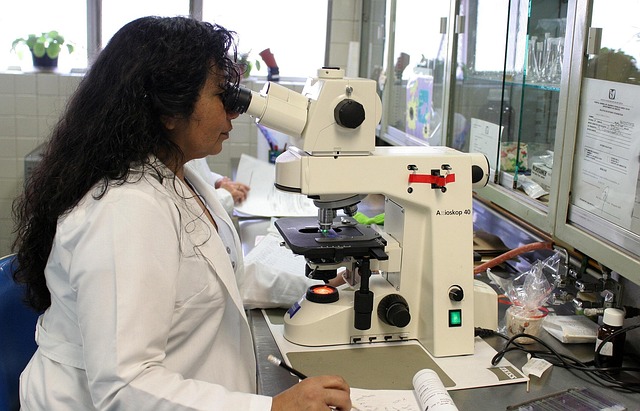Medical professionals, especially Medical Doctors (MDs) and Osteopathic Physicians (DOs), face significant legal risks, including professional liability due to patient harm caused by misdiagnosis, treatment errors, or negligence. To mitigate these risks, they must prioritize risk management through tailored insurance coverage, staying informed about medical advancements and legal updates, implementing robust documentation practices, and engaging in continuous education (CE). Regular reviews, standardized forms, and open communication with patients are key to enhancing risk mitigation strategies and ensuring quality patient care while safeguarding careers and institutions.
In today’s complex healthcare environment, understanding professional liability for doctors is paramount. This comprehensive guide explores the legal landscape facing MDs and DOs, providing insights into emerging risks and challenges. We delve into effective risk management strategies, best practices for documenting medical decisions, and the importance of continuous education to stay current with legal updates. Additionally, we offer robust defense mechanisms to mitigate liability, equipping healthcare professionals with essential tools to navigate professional liability issues successfully.
- Understanding Professional Liability for Doctors: A Comprehensive Overview
- Legal Landscape: Risks and Challenges Facing MDs and DOs
- Key Components of Effective Risk Management Strategies
- Best Practices for Documenting Medical Decisions and Actions
- Continuous Education and Staying Current with Legal Updates
- Building a Robust Defense: Strategies for Mitigating Liability
Understanding Professional Liability for Doctors: A Comprehensive Overview

For medical professionals, understanding professional liability for doctors is an essential aspect of their practice. This concept, also known as malpractice, refers to the potential legal responsibility physicians face when their actions or decisions result in patient harm. It’s a crucial area of concern for Medical Directors (MDs) and Osteopathic Physicians (DOs), as it can significantly impact their careers and medical institutions.
Doctors must be aware that professional liability encompasses various scenarios, from misdiagnosis to treatment errors, and even negligence in patient care. Comprehensive insurance coverage is often a strategic step for MDs and DOs to mitigate risks. This protection ensures that they are financially secure should any adverse events occur during their duties, allowing them to focus on patient well-being without undue concern for potential legal repercussions.
Legal Landscape: Risks and Challenges Facing MDs and DOs

In the dynamic landscape of healthcare, Medical Doctors (MDs) and Osteopathic Doctors (DOs) navigate a complex web of legal responsibilities and potential risks. The ever-evolving medical field brings both advancements and challenges, with one significant aspect being professional liability for doctors. As practitioners, MDs and DOs must contend with the delicate balance between patient care and legal repercussions, ensuring they stay abreast of the latest regulations and guidelines to mitigate potential liabilities.
The intricate nature of healthcare decisions exposes doctors to various risks, from medical malpractice suits to regulatory audits. Understanding and managing these challenges are crucial for maintaining professional integrity and delivering quality patient care. Staying informed about state and federal laws related to professional liability is essential, as it empowers MDs and DOs to make well-informed decisions that safeguard their practices and patients alike.
Key Components of Effective Risk Management Strategies

In the medical field, effective risk management is paramount, especially for Medical Doctors (MDs) and Osteopathic Doctors (DOs). Key components of successful strategies include comprehensive professional liability insurance tailored to their unique practices. This coverage safeguards against potential malpractice claims, offering financial protection should a patient suffer adverse outcomes despite adequate care. Regularly reviewing and updating risk assessment protocols is also vital; identifying vulnerabilities and implementing preventative measures helps mitigate risks.
Additionally, staying current with medical advancements and regulatory changes ensures that MDs and DOs deliver evidence-based practices, reducing exposure to liability. Continuous professional development through workshops and seminars equips healthcare professionals with the latest knowledge and skills, enabling them to navigate complex patient scenarios confidently. A robust communication strategy, fostering open dialogue with patients about treatment options and potential risks, further strengthens risk management by setting clear expectations.
Best Practices for Documenting Medical Decisions and Actions

Maintaining accurate and detailed documentation is paramount for medical professionals to mitigate risks associated with professional liability for doctors. When recording medical decisions and actions, consistency and completeness are key. Each step should be meticulously documented, from initial patient assessment to final discharge instructions. This not only ensures compliance with legal requirements but also serves as robust evidence in the event of any discrepancies or legal disputes.
Utilizing standardized forms and templates can streamline the documentation process while reducing errors. Digital record-keeping systems offer advantages such as quick data retrieval and improved accessibility, enhancing efficiency during patient care and potential claim scenarios. Regular reviews of recorded information by both practitioners and support staff are essential to identify any missing details or discrepancies, ensuring a comprehensive audit trail.
Continuous Education and Staying Current with Legal Updates

Staying abreast of medical advancements and legal updates is crucial for Medical Doctors (MDs) and Osteopathic Doctors (DOs) to maintain their expertise and mitigate professional liability. Continuous Education (CE) plays a vital role in this regard, ensuring practitioners stay current with the latest research, treatment modalities, and industry standards. Engaging in CE activities demonstrates a commitment to patient safety and quality care, which is not only beneficial for individual practice but also enhances the overall healthcare landscape.
Regular participation in workshops, webinars, and conferences allows MDs and DOs to network with peers, exchange insights, and gain exposure to innovative practices. Additionally, keeping up with legal developments is essential to navigate the complex landscape of medical regulations and avoid potential liabilities. This includes staying informed about changes in insurance policies, patient rights, and healthcare laws, ensuring practitioners can make well-informed decisions that align with ethical and legal standards.
Building a Robust Defense: Strategies for Mitigating Liability

In the medical field, where every decision can have significant consequences, mitigating professional liability is an essential aspect of practice management for MDs and DOs. Building a robust defense strategy is crucial to safeguarding against potential lawsuits and ensuring the long-term success of medical practices. One effective approach involves staying updated with the latest medical guidelines and evidence-based practices, as this demonstrates due diligence and helps establish reasonable standards of care. Regularly reviewing and documenting clinical decisions ensures transparency and provides a solid foundation for defense if any issues arise.
Additionally, fostering open communication between healthcare professionals and patients is vital. Informed consent processes, where patients understand their treatment options and potential risks, can reduce the likelihood of future disputes. Implementing robust risk management protocols, including thorough patient screening, accurate record-keeping, and efficient incident reporting systems, further strengthens a practice’s defense. These strategies collectively contribute to minimizing professional liability for doctors, fostering a safer environment for both practitioners and patients.
